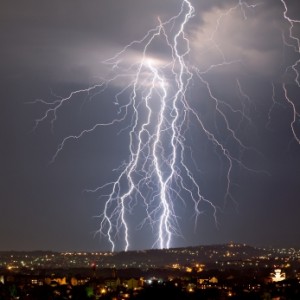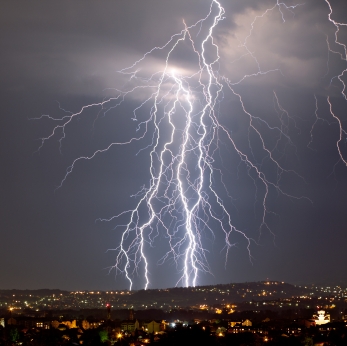 While the deadly tornadoes that have caused massive destruction in multiple states have been making the headlines recently, intense lightning storms have also done extensive damage. In fact, lightning strikes cost more than $1 billion in insured losses in 2010—a significant increase from 2009, according to the Insurance Information Institute(I.I.I.).
While the deadly tornadoes that have caused massive destruction in multiple states have been making the headlines recently, intense lightning storms have also done extensive damage. In fact, lightning strikes cost more than $1 billion in insured losses in 2010—a significant increase from 2009, according to the Insurance Information Institute(I.I.I.).
An analysis of homeowners insurance data by the I.I.I. found there were more than 213,000 lightning claims in 2010, up nearly 15 percent from 2009. These losses ranged from damage to expensive electronic equipment to structural fires that destroyed entire homes.
The I.I.I. puts the average lightning claim at $4,846. By comparison, in 2009, there were about 185,000 lightning claims, which caused nearly $800 million in insured losses with the average claim totaling $4,296. The average cost per claim rose nearly 13 percent from 2009 to 2010, and more than 80 percent from 2004 to 2010, even as the actual number of claims fell by a little over 23 percent in the six-year period.
“The number of claims is down, but the average cost per claim continues to rise, in part because of the huge increase in the number and value of consumer electronics in homes,” said Loretta Worters, vice president of the I.I.I. “Plasma and high-definition television sets, home entertainment centers, multiple computer households, gaming systems and other expensive devices—which can all be destroyed by power surges—are having a significant impact on claims losses.”
“The record losses are a result, in part, of the large number of storms occurring last year,” said Worters. “Catastrophe losses in 2010 totaled $13.6 billion.”
Worters noted that given last year’s record tornado activity and the fact that tornadoes are usually accompanied by severe thunderstorms, it was not surprising that the number of such claims increased substantially in 2010.
Damage caused by lightning, such as fire, is covered by standard homeowners and business insurance policies. Some home and business insurance policies provide coverage for power surges that are the direct result of a lightning strike. There is also coverage for lightning damage under the optional comprehensive portion of an auto insurance policy.
In recognition of Lightning Safety Week (June 19-25), consider the following tips from the Insurance Institute for Business & Home Safety (IBHS) to protect your home or business against lightning.
Reducing the Risk of Lightning Damage
- Have a lightning protection system installed for your home or business.
- Be sure the lightning protection system is designed and installed in accordance with accepted industry standards and with NFPA, LPI and UL requirements
- Include protection for electrical, telephone, cable or satellite TV lines entering the structure.
- Make sure all equipment is UL-listed and properly labeled.
Lightning protection systems are designed to protect a structure and provide a specified path to harness and safely ground the super-charged current of the lightning bolt. The system neither attracts nor repels a strike, but receives the stroke and routes it harmlessly into the earth, thus discharging the dangerous electrical event. Investment in a lightning protection system will protect your organization’s investment in its property and equipment.
Do’s and Don’ts for Lightning Safety
The Lightning Protection Institute also advises the following:
- Treat lightning with proper caution. If you are outside and a thunderstorm approaches, immediately seek shelter inside, in a home, large building or substantial, fully enclosed building, all preferably protected with a lightning protection system.
- If a building is not available, take shelter in a car with a metal top and keep doors and windows closed.
- If caught outdoors, try to minimize your risk by going to a place of lower elevation.
- Certain locations are extremely hazardous during thunderstorms. Avoid lakes, beaches or open water; fishing from a boat or dock; and riding on golf carts, farm equipment, motorcycles or bicycles. Take shelter in tunnels, subways, even ditches or caves if necessary—never under a tree!
- To avoid side flashes (voltage from a nearby struck object) stay clear of fences or isolated trees. Keep away from telephone poles, power lines, pipelines or other electrically conductive objects.
- Stay off the telephone. In your home, do not stand near open windows, doorways or metal piping. Stay away from the TV, plumbing, sinks, tubs, radiators and stoves. Avoid contact with small electric appliances such as radios, toasters and hairdryers.












